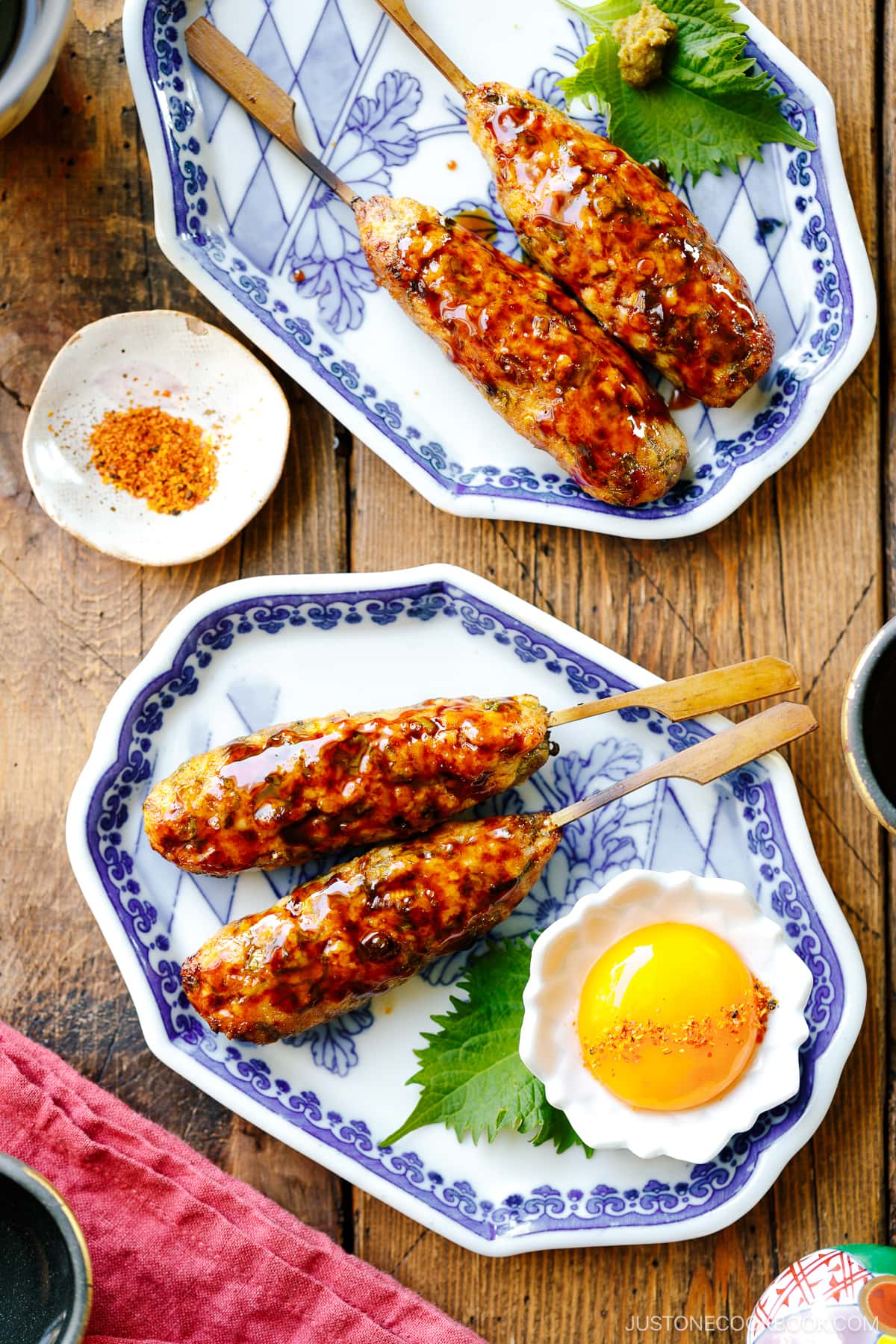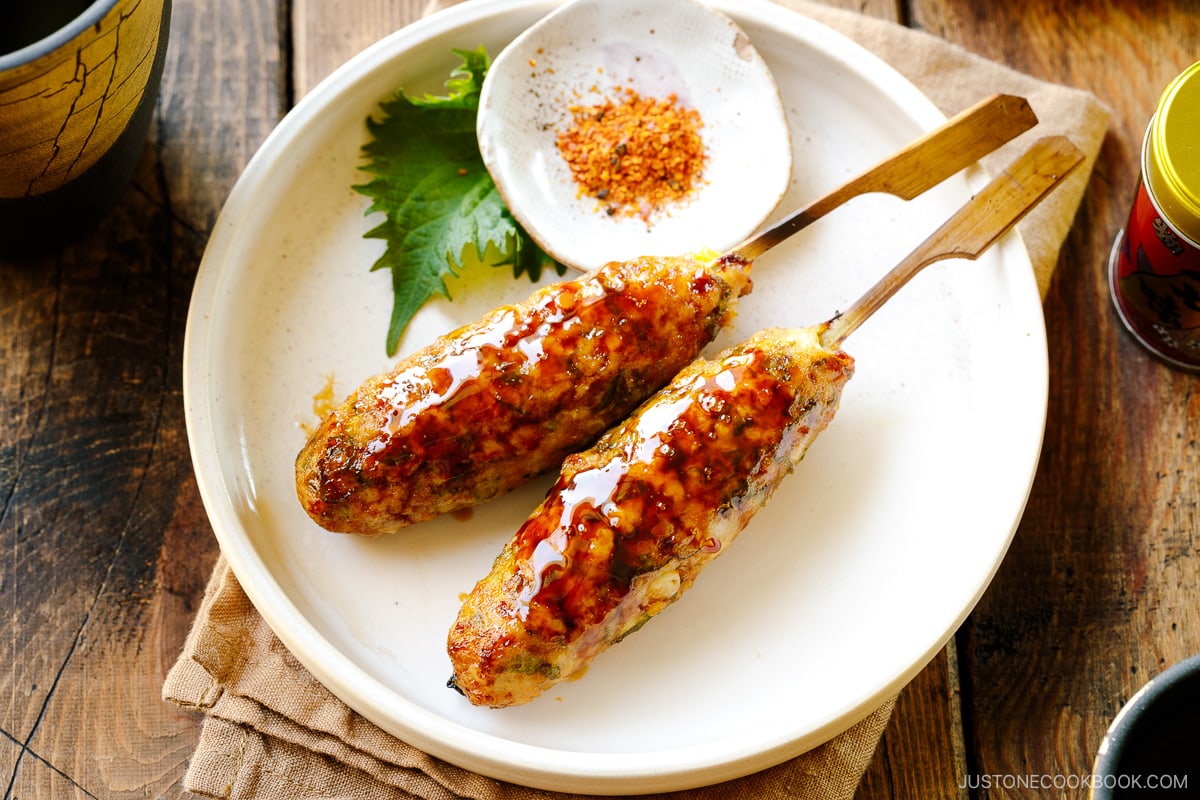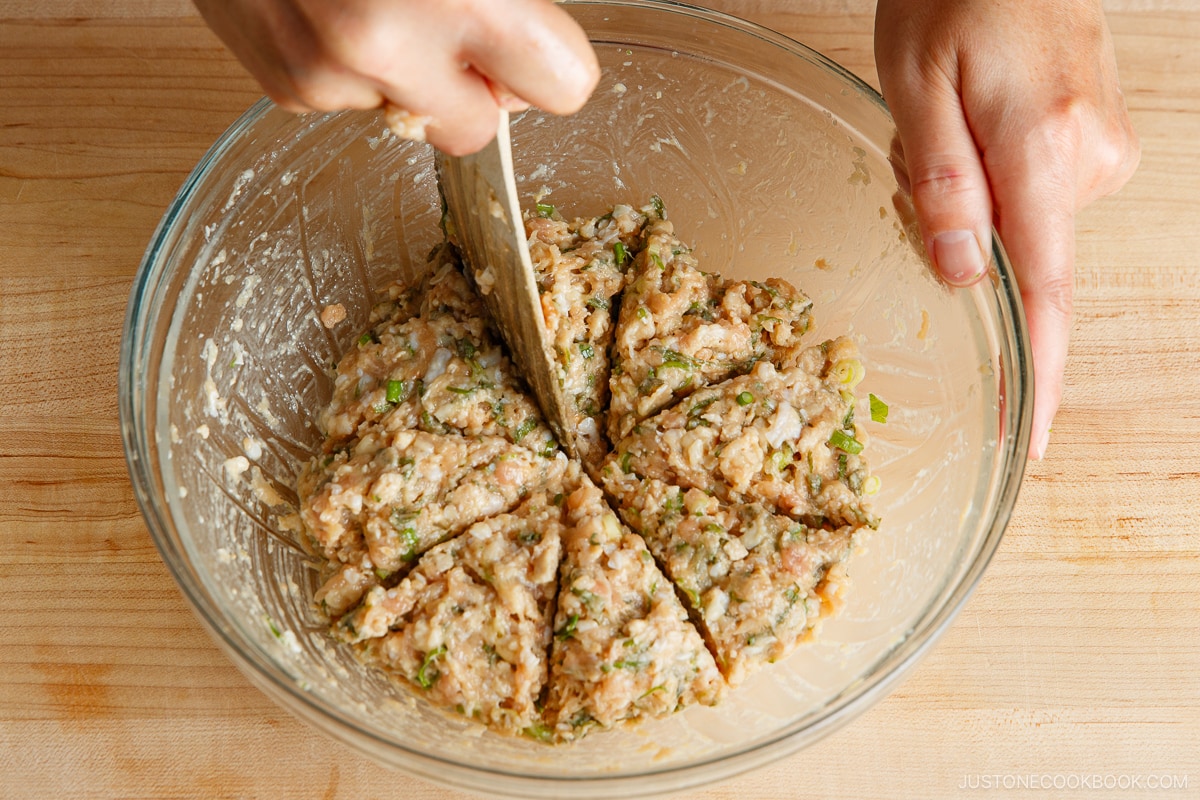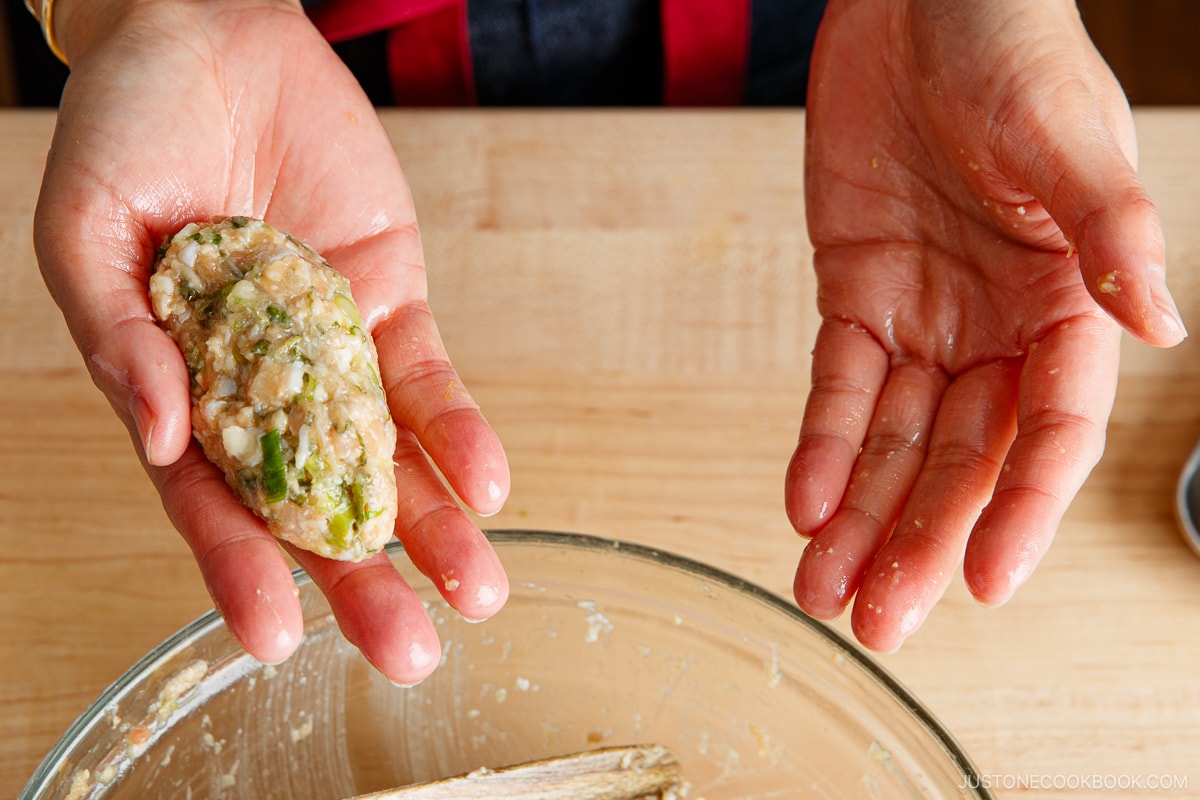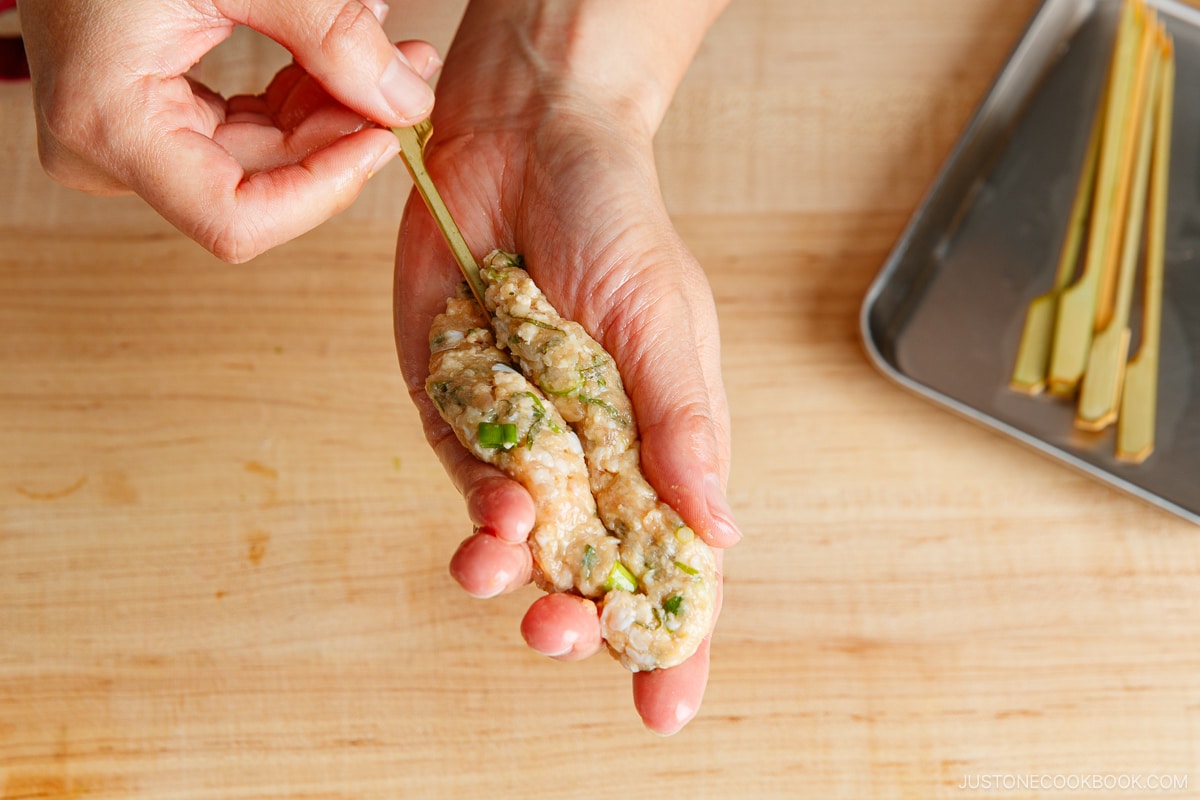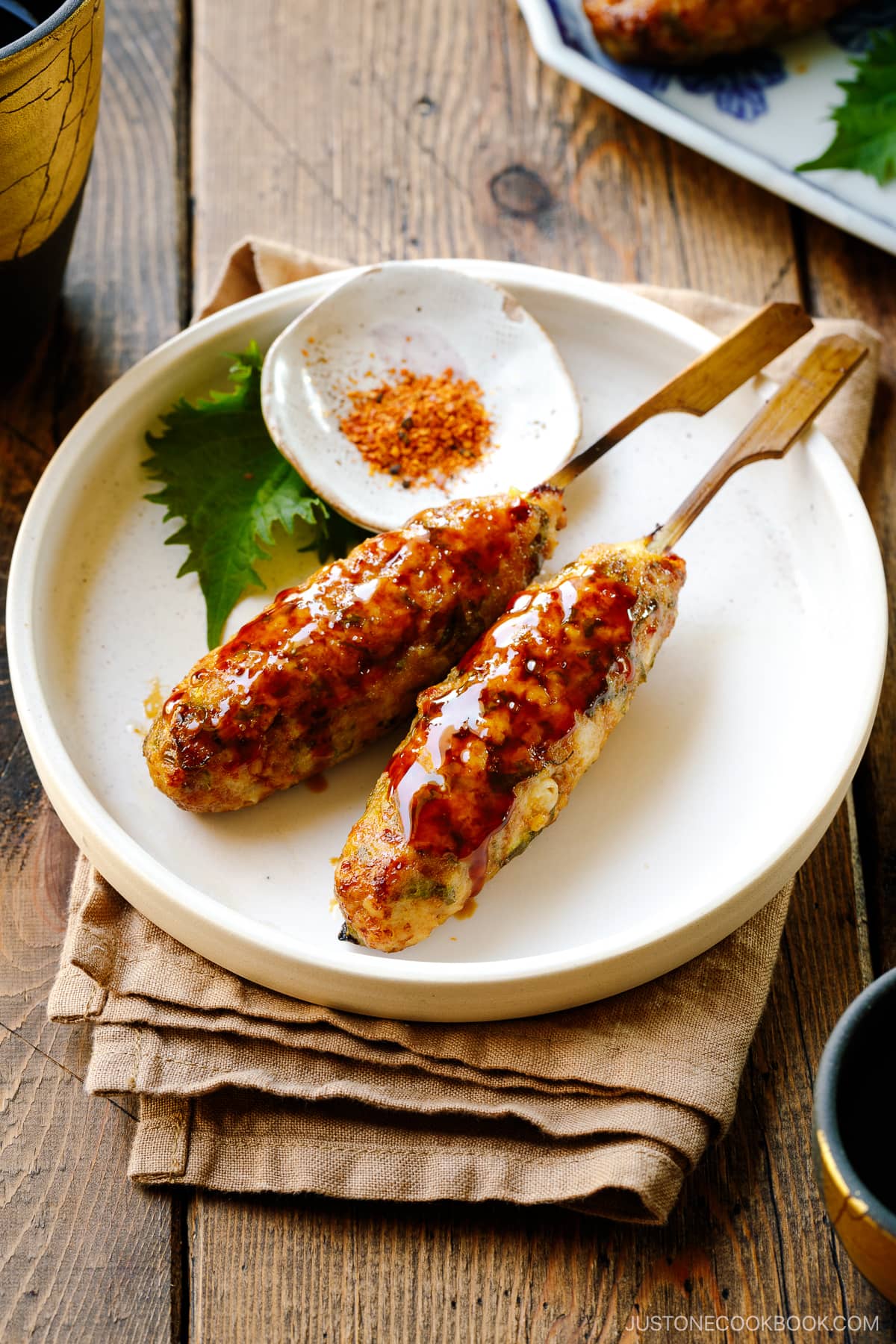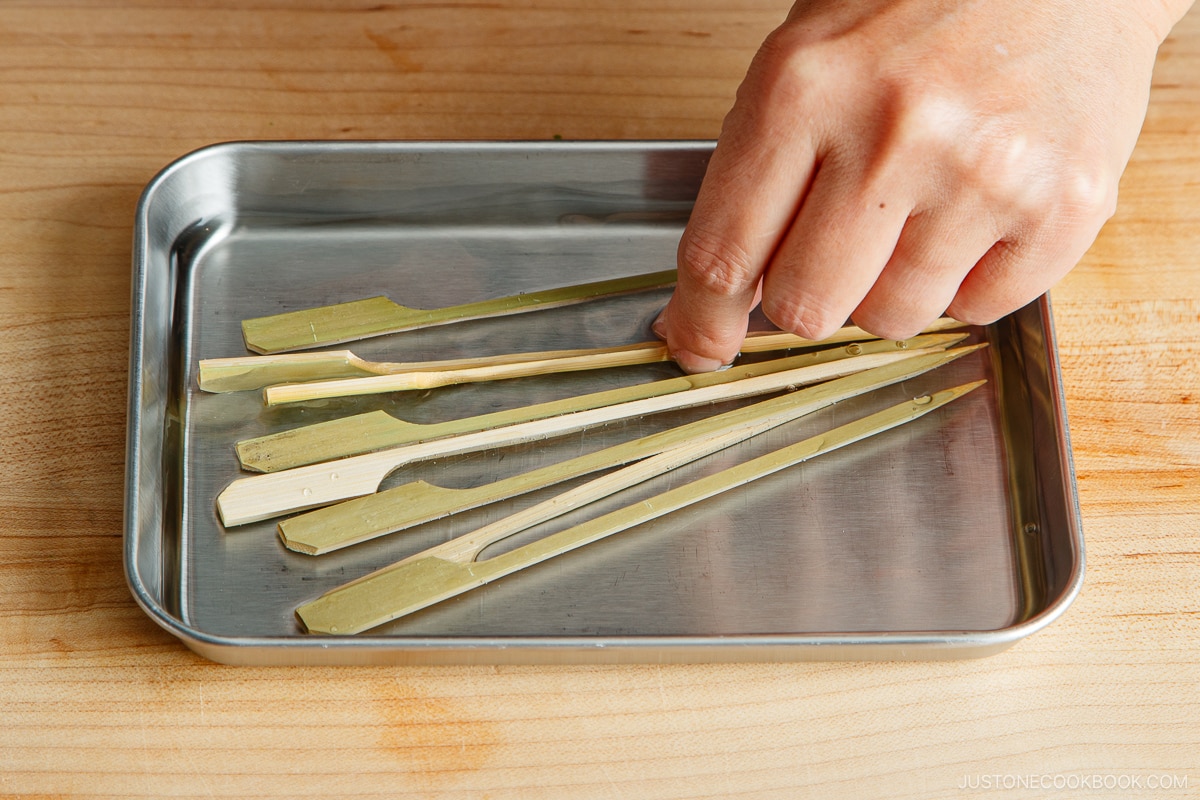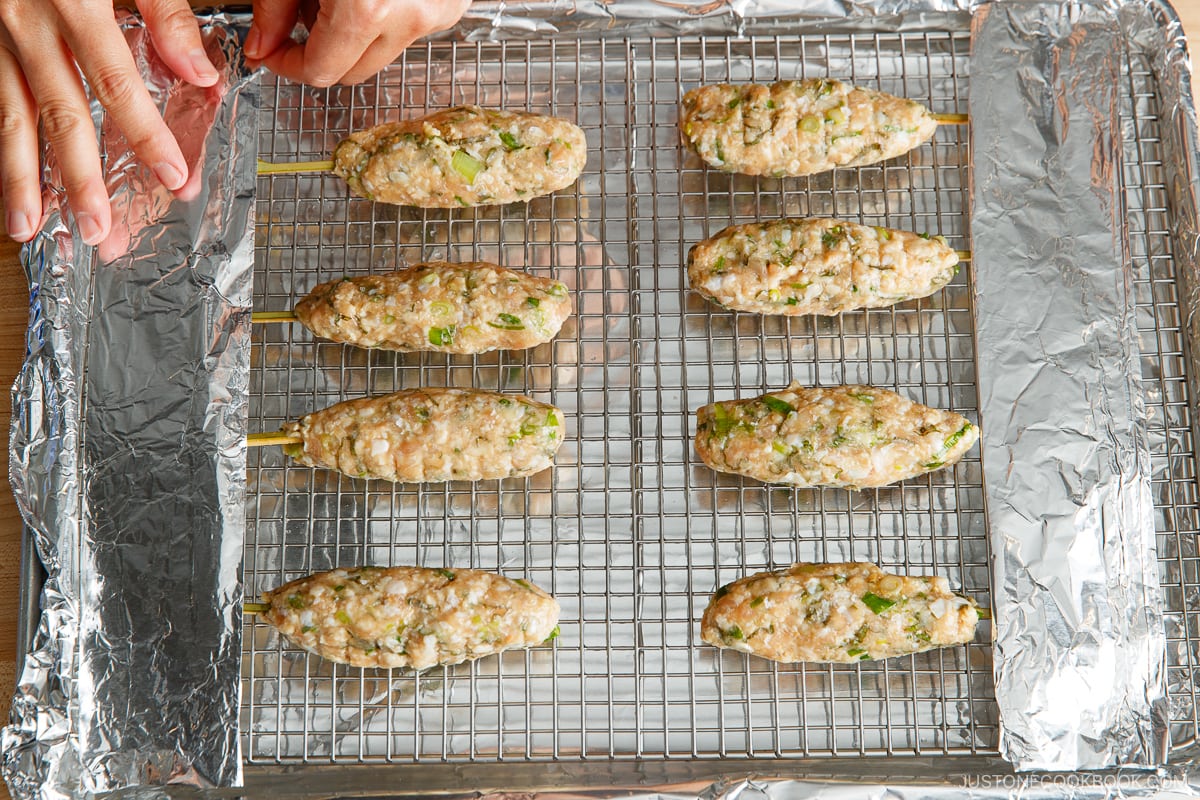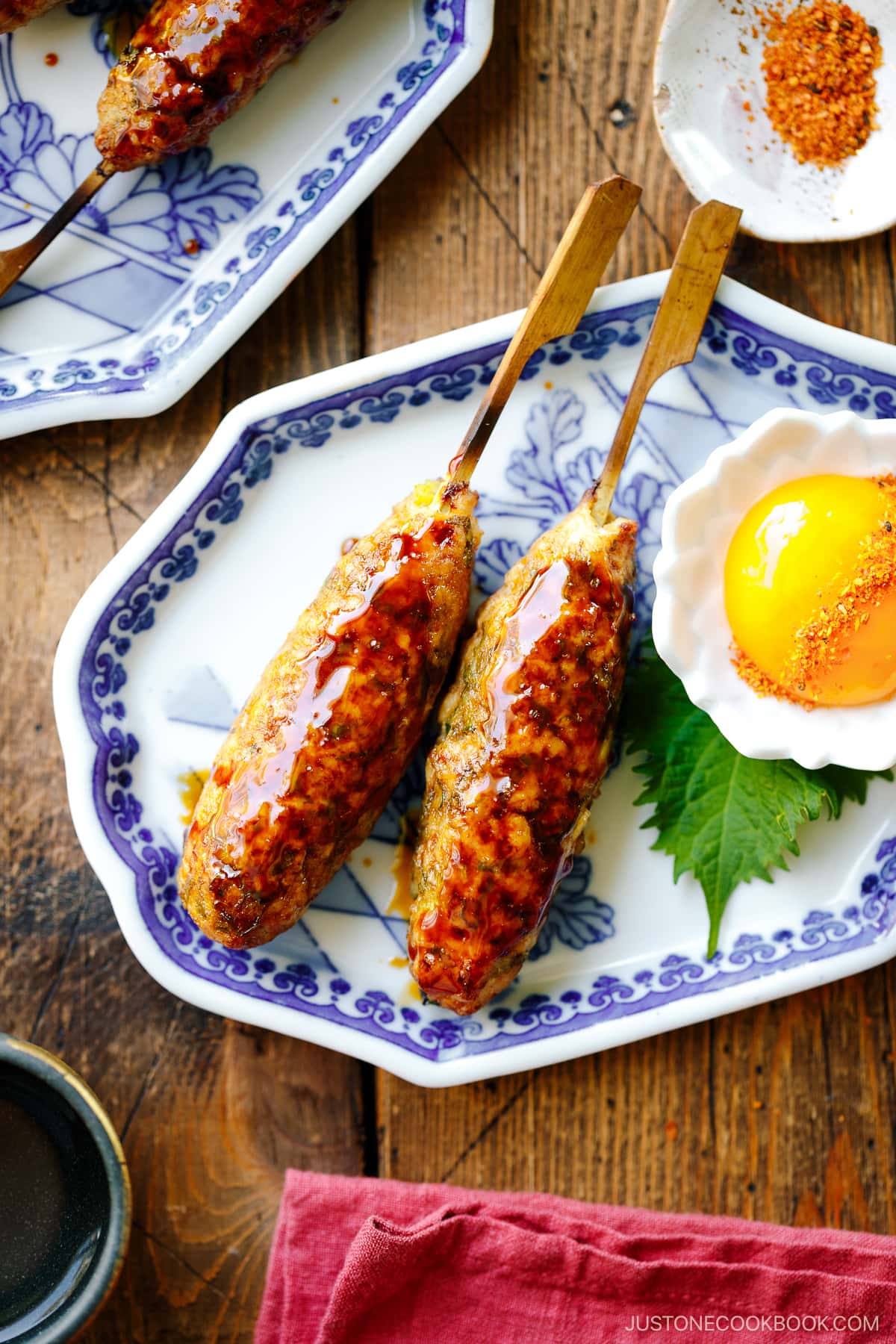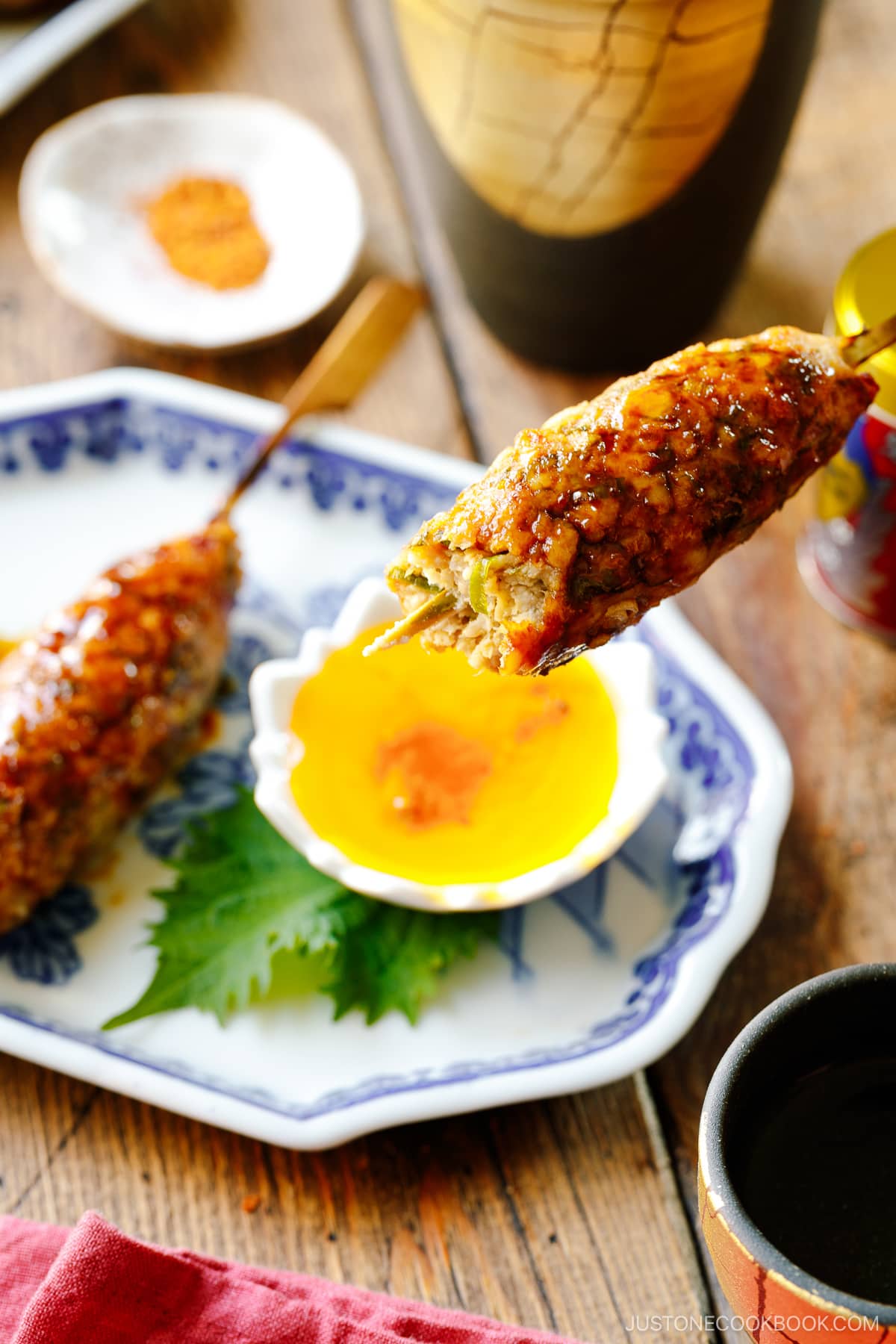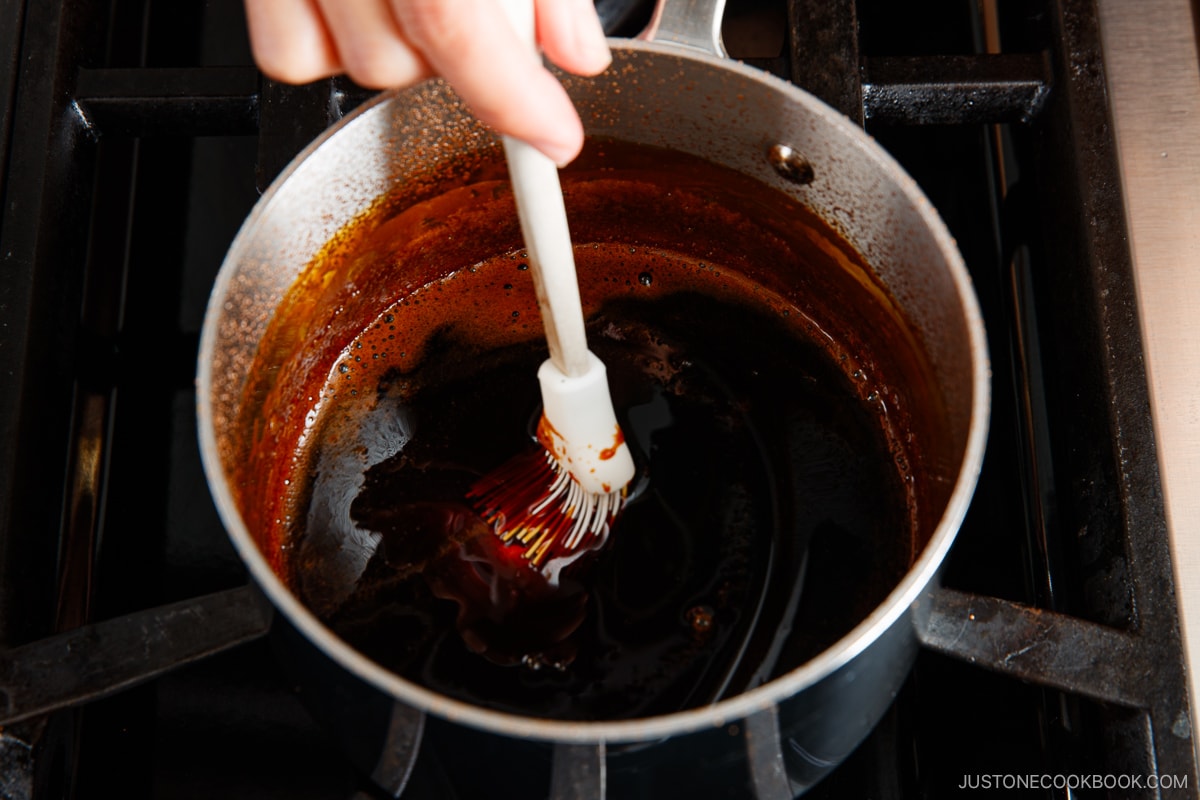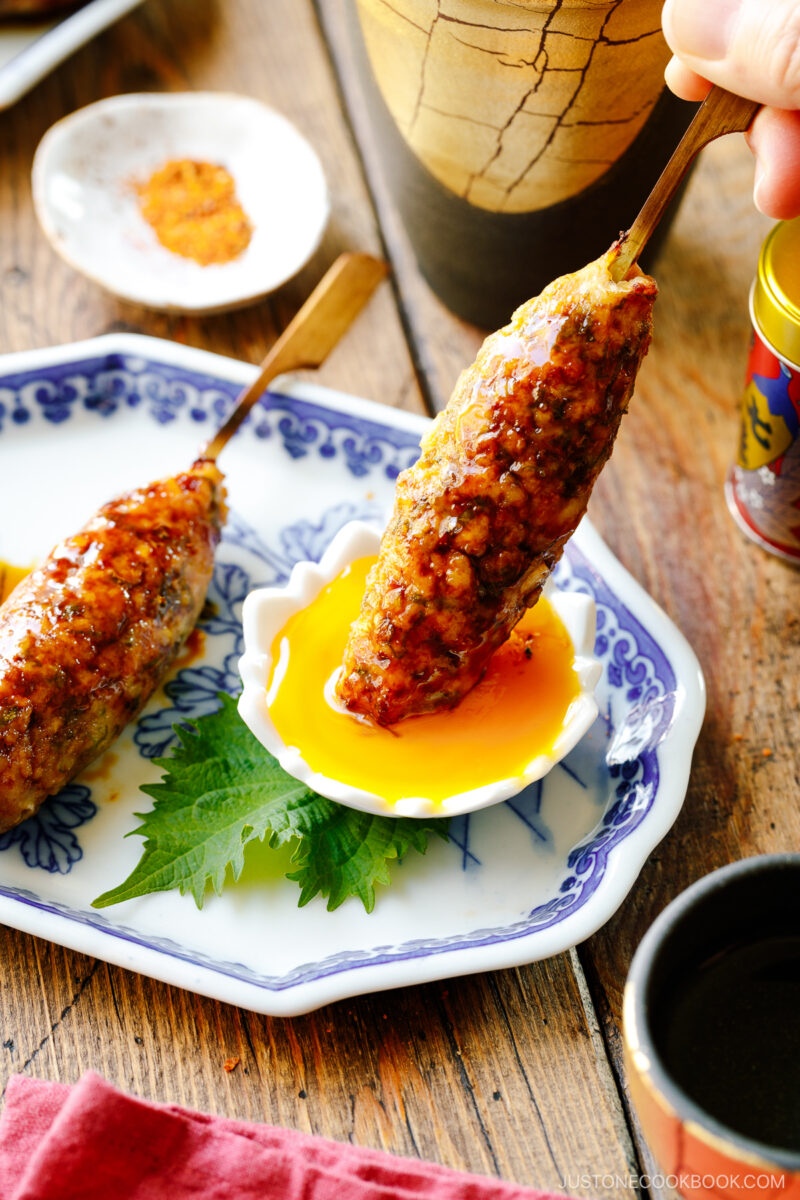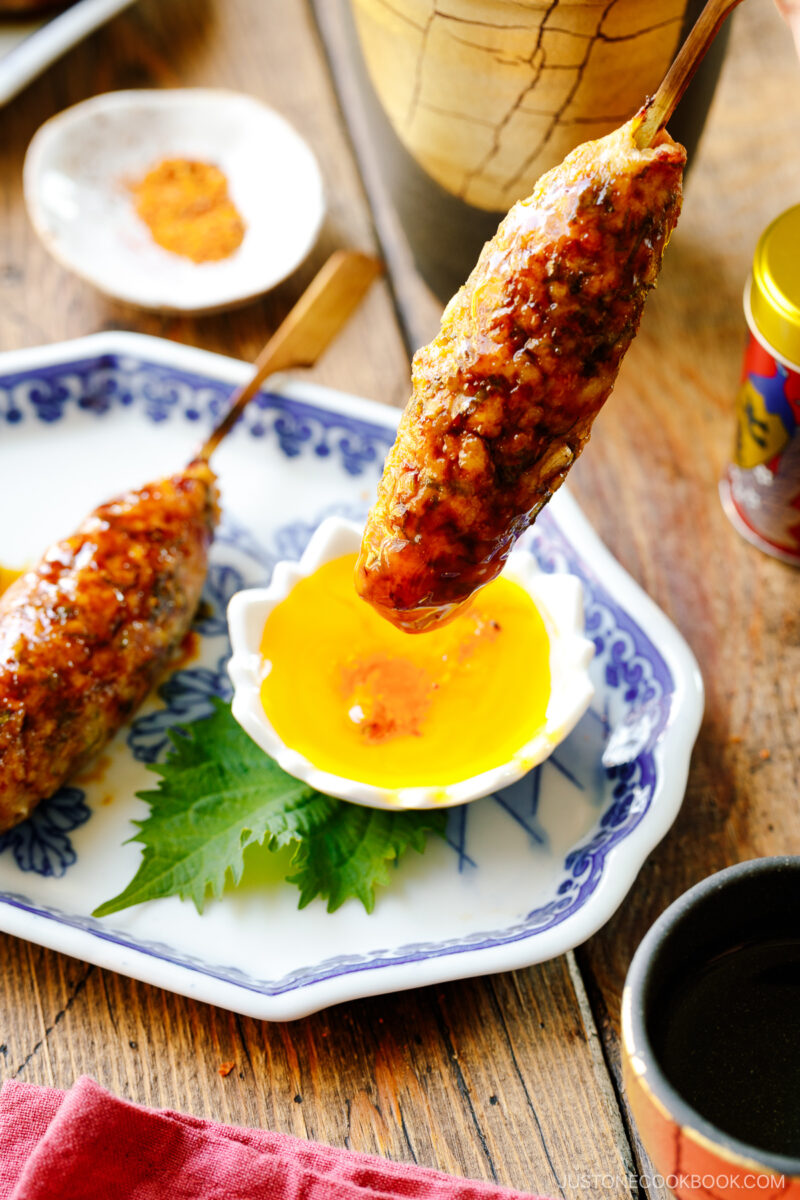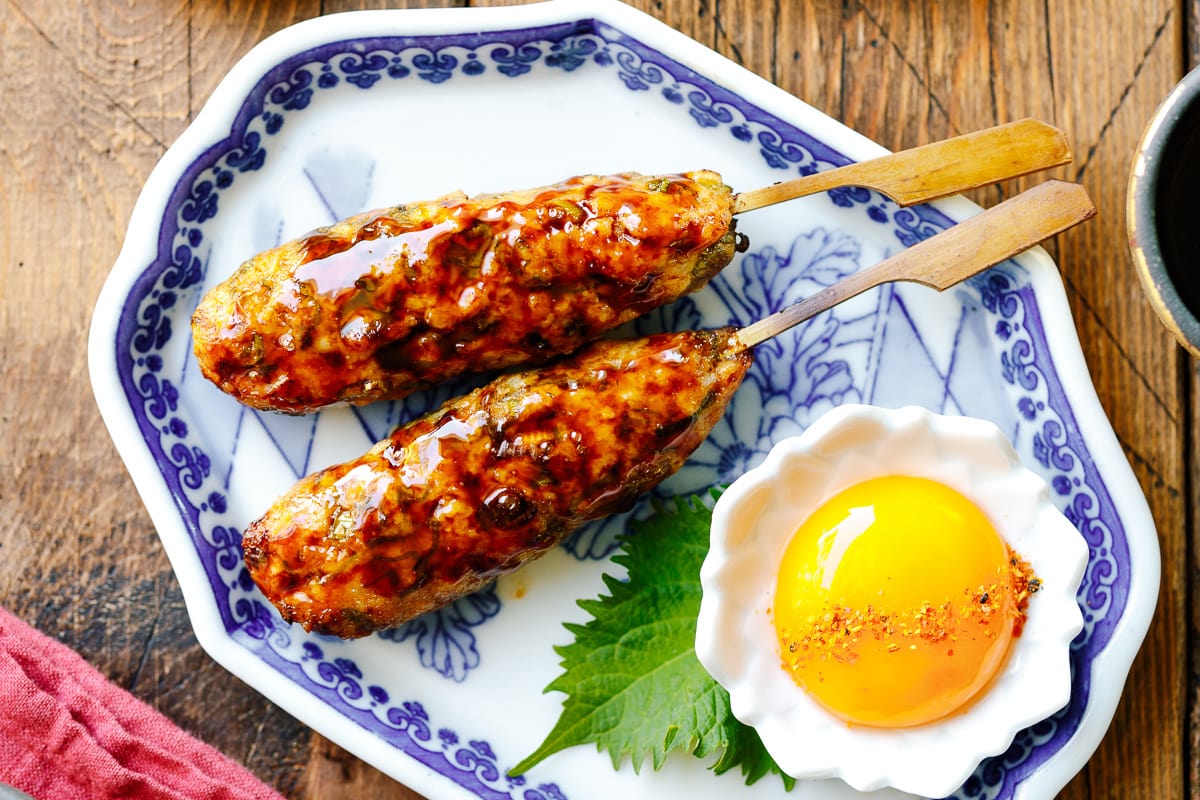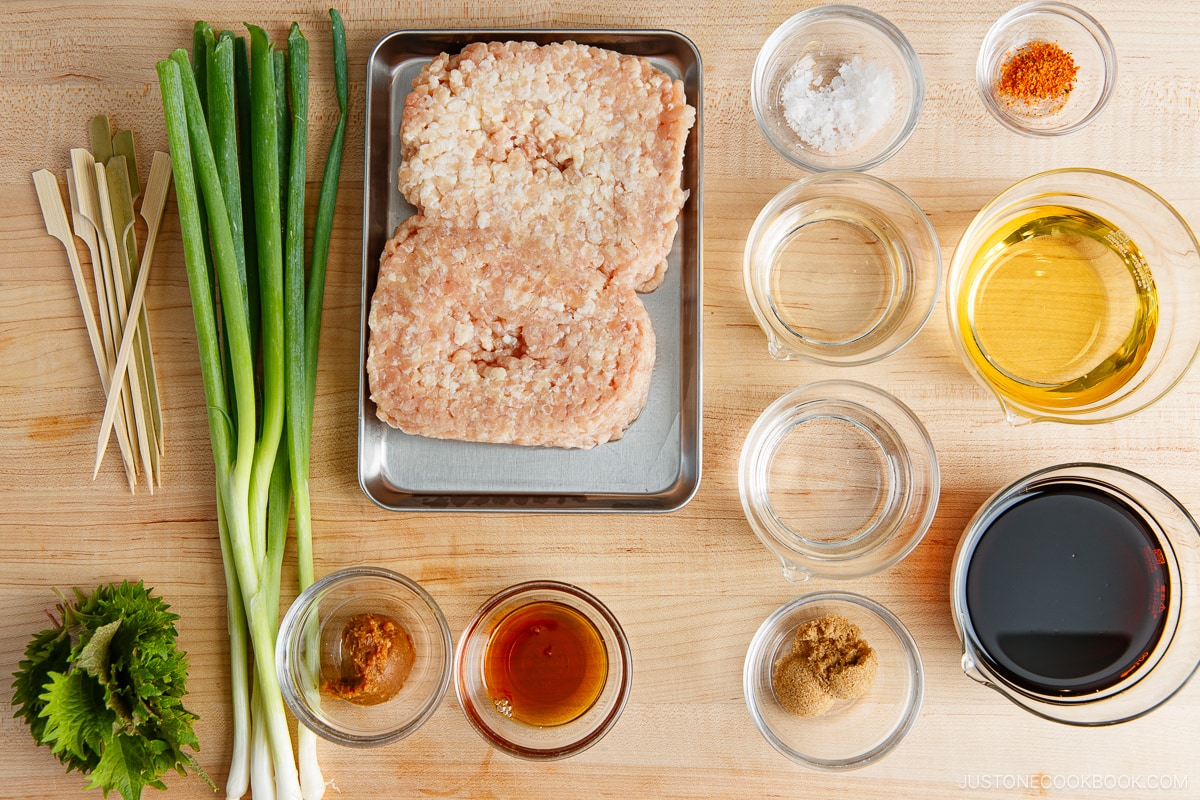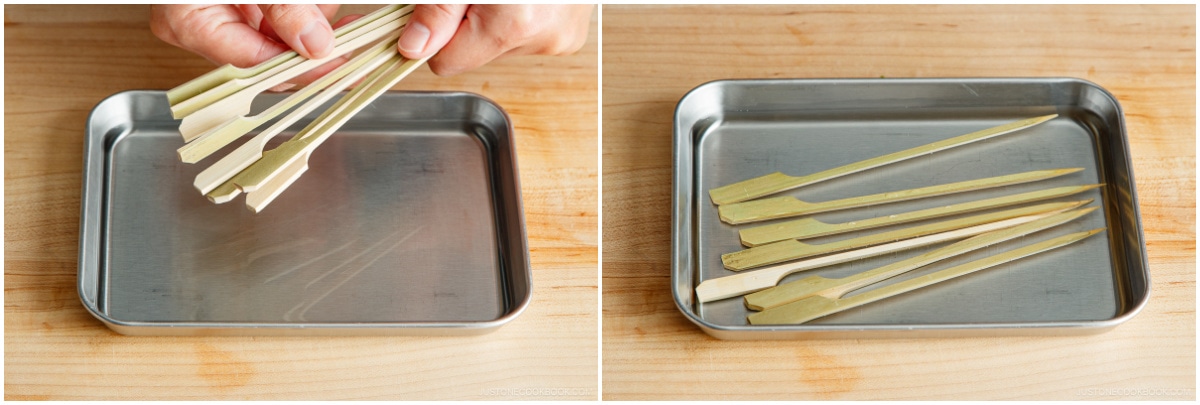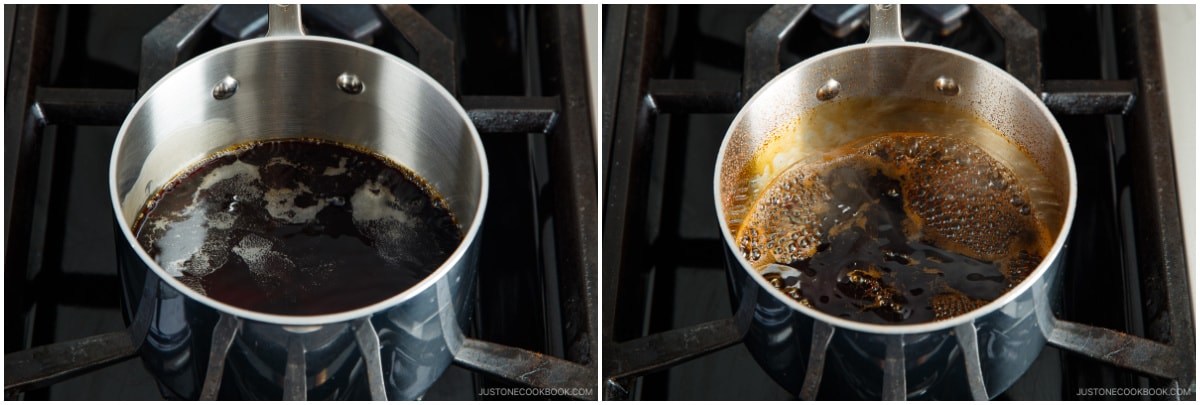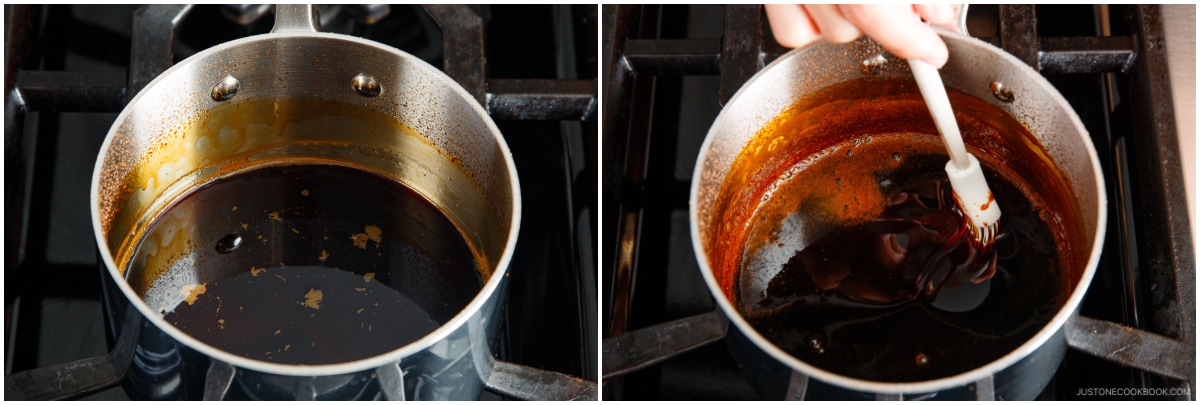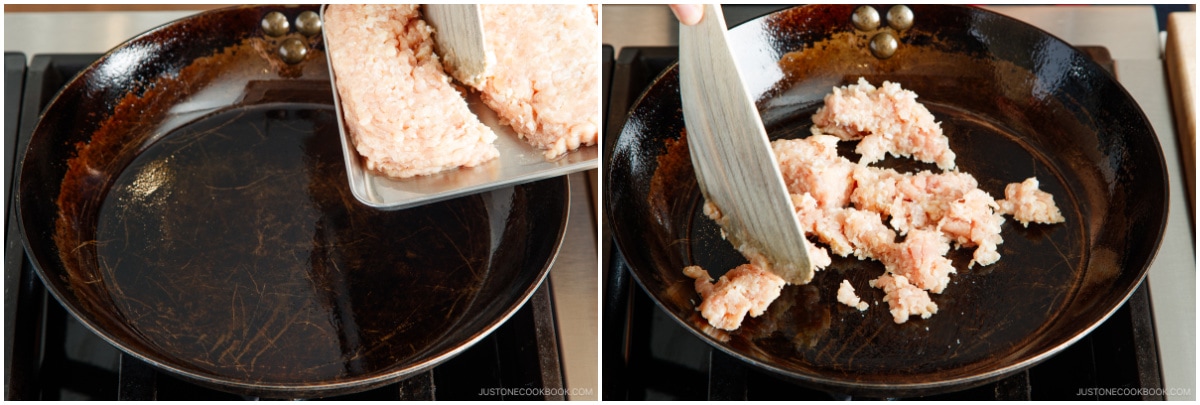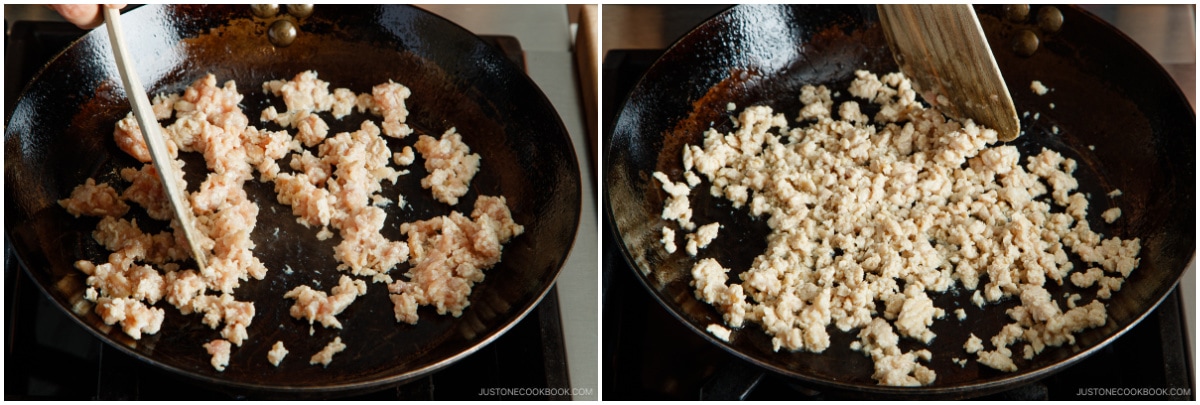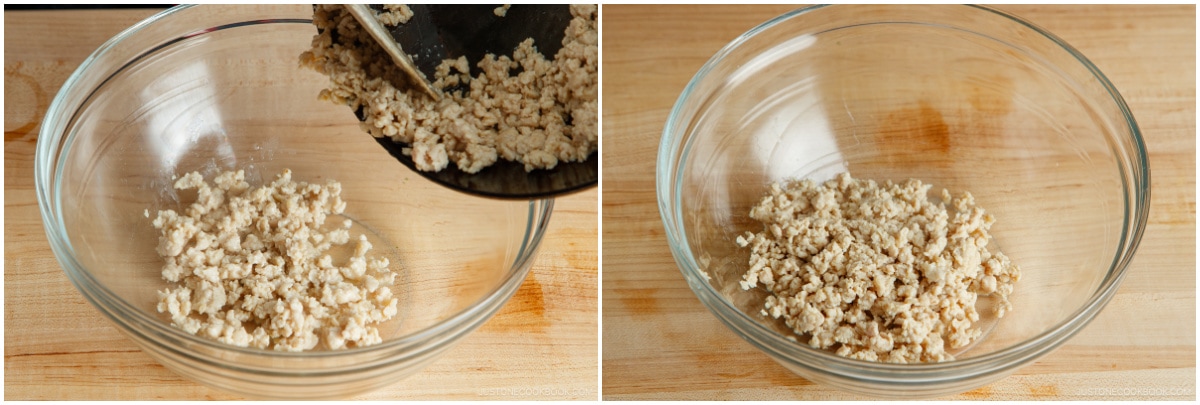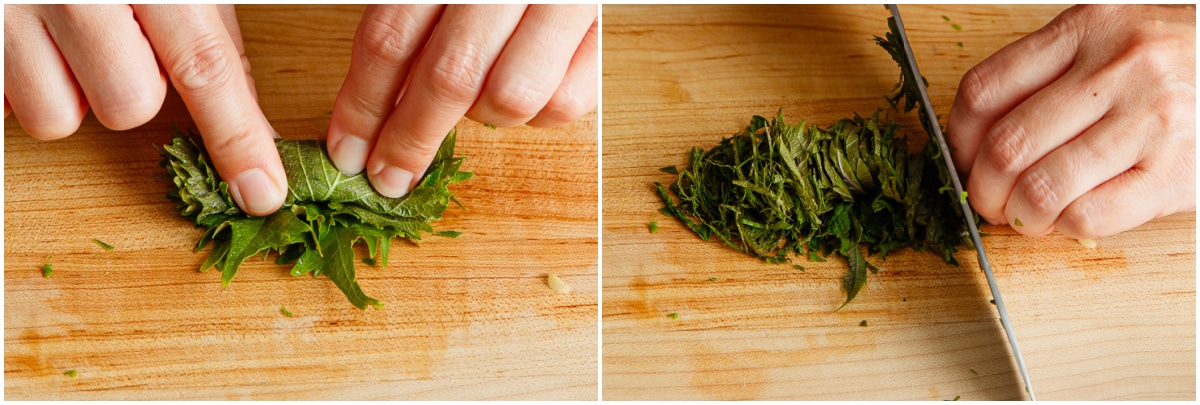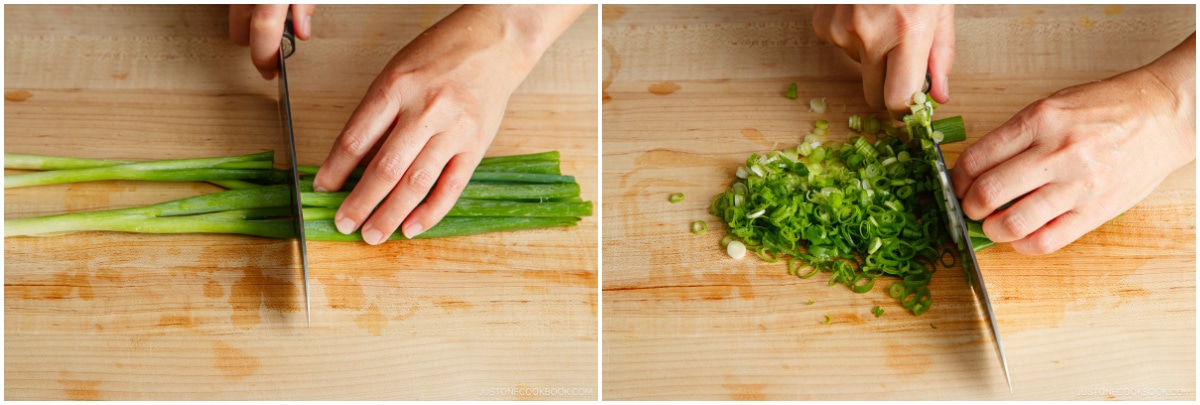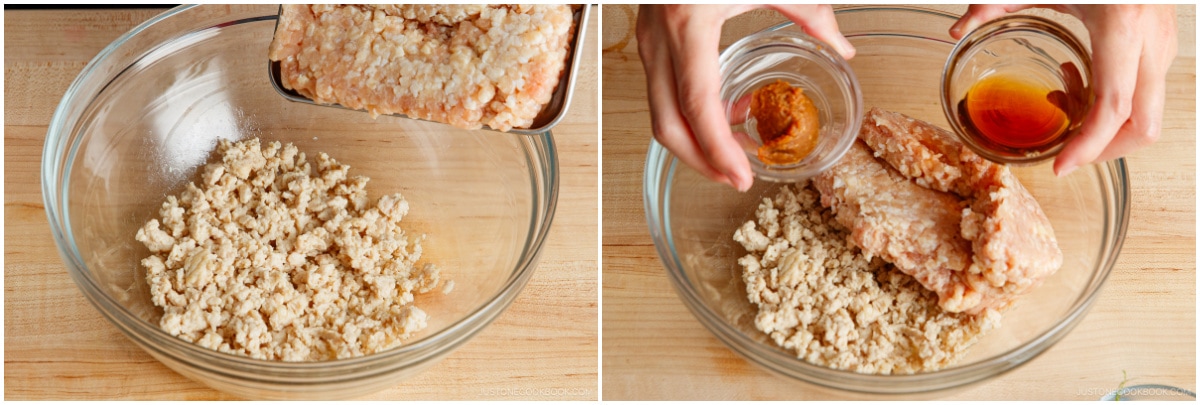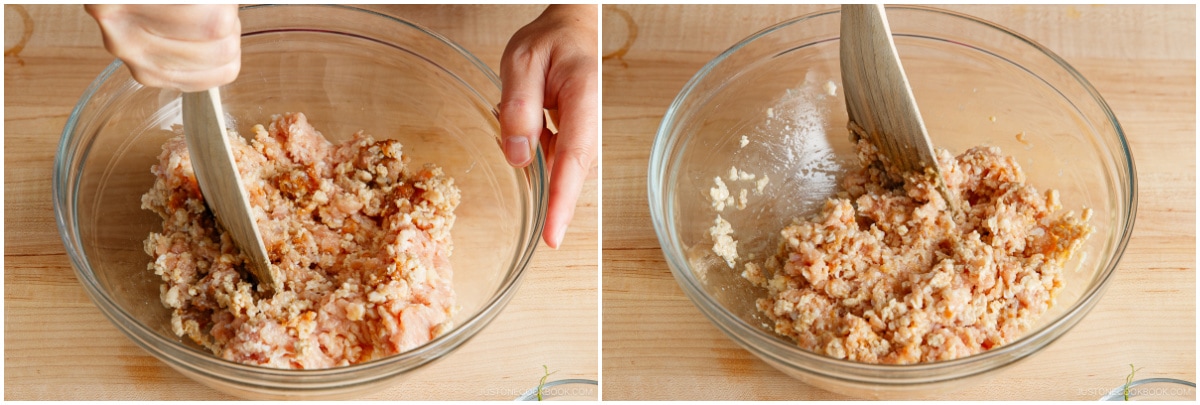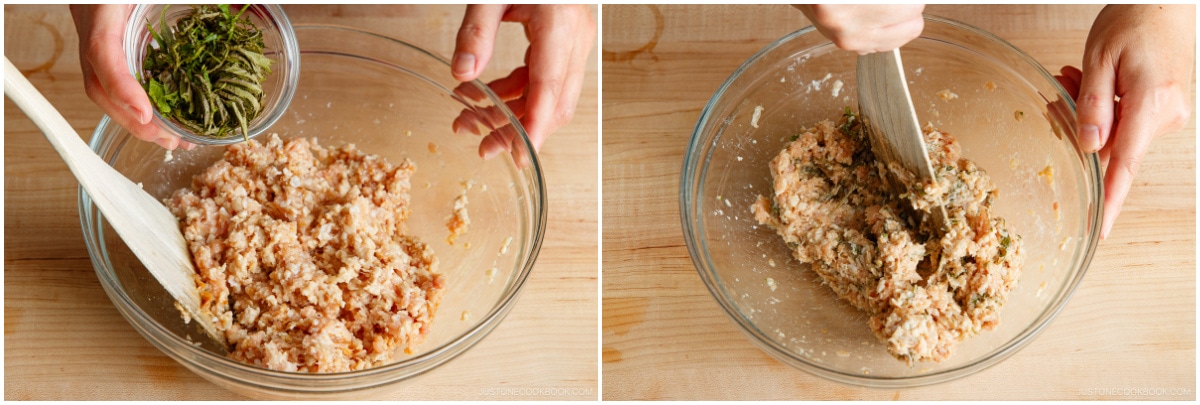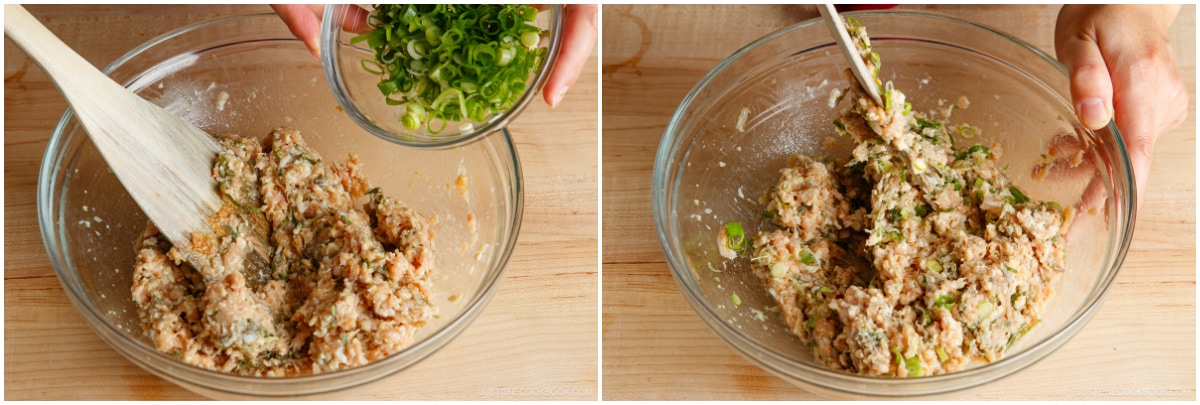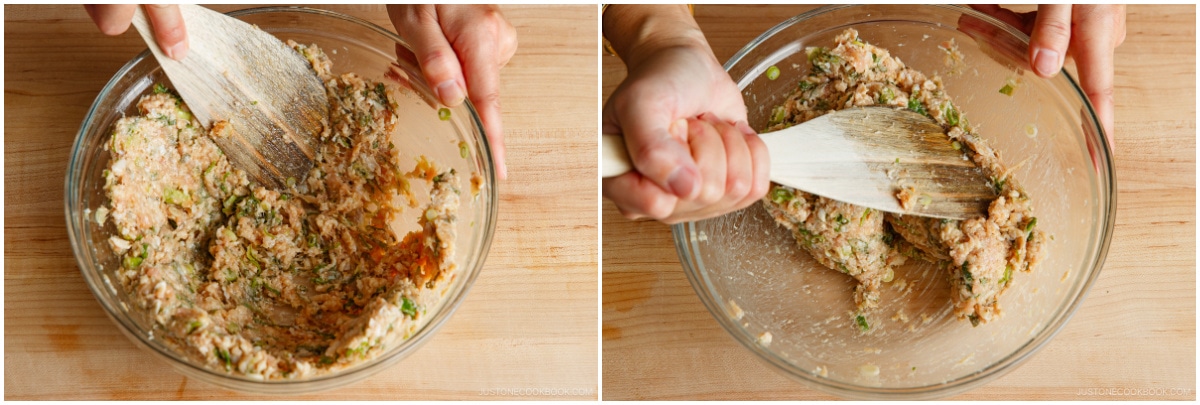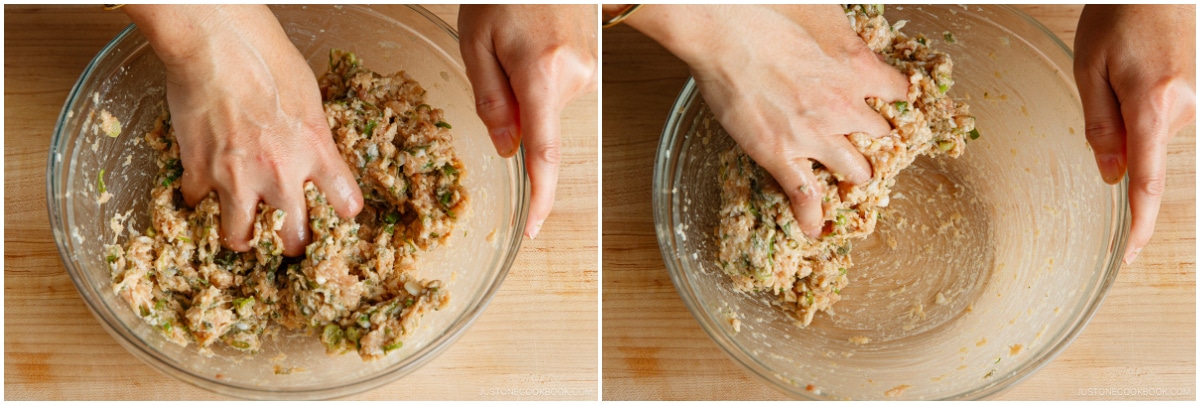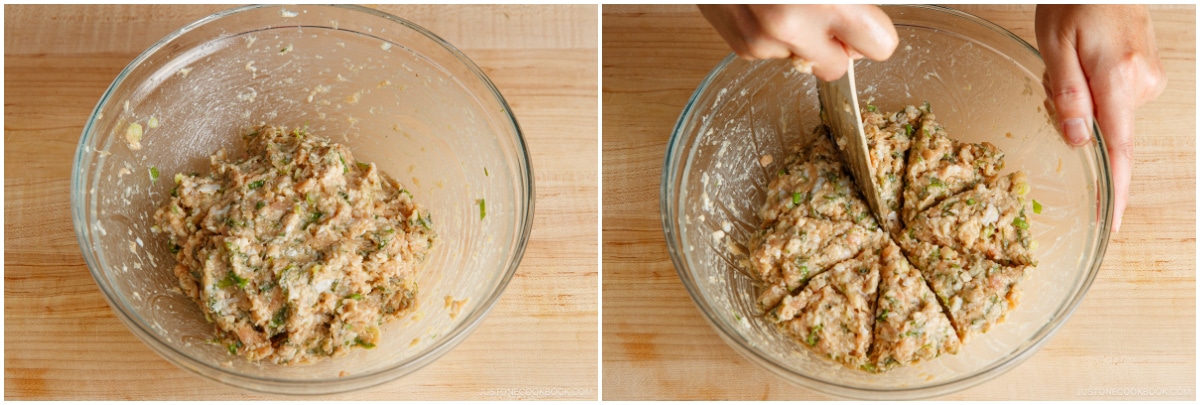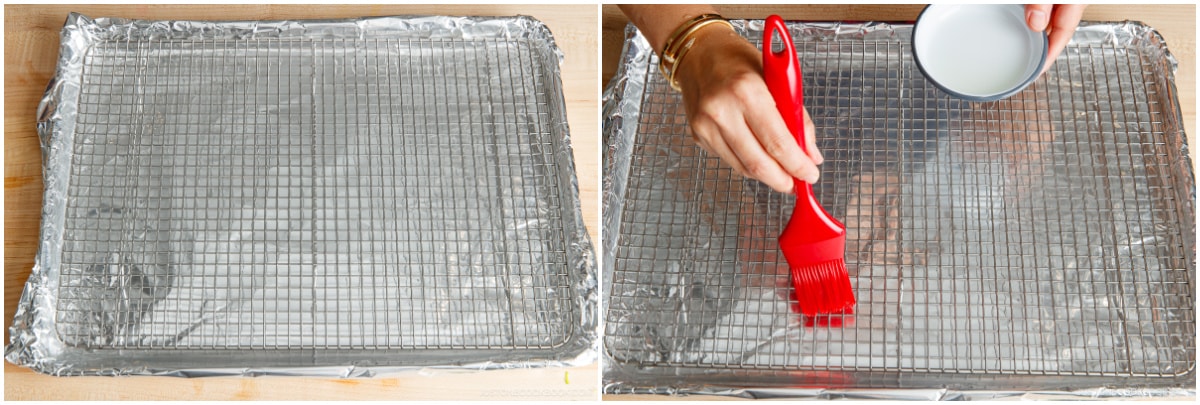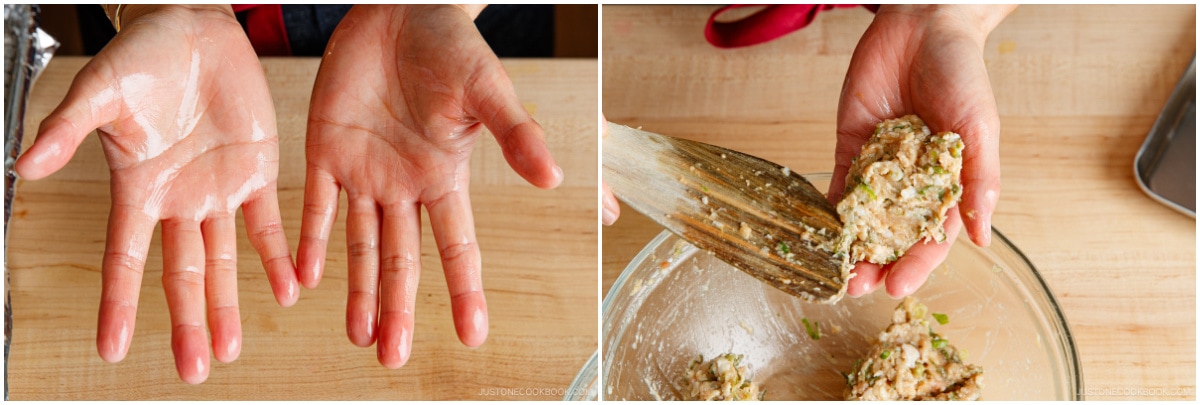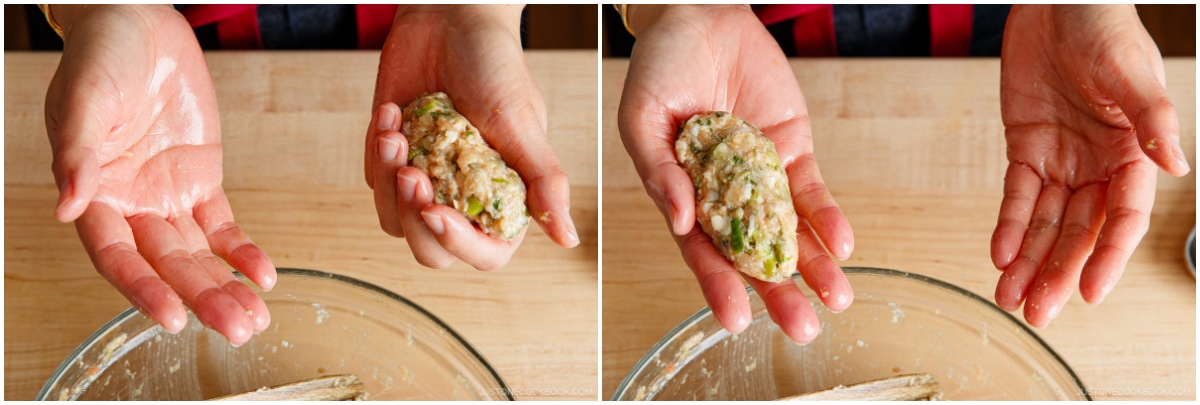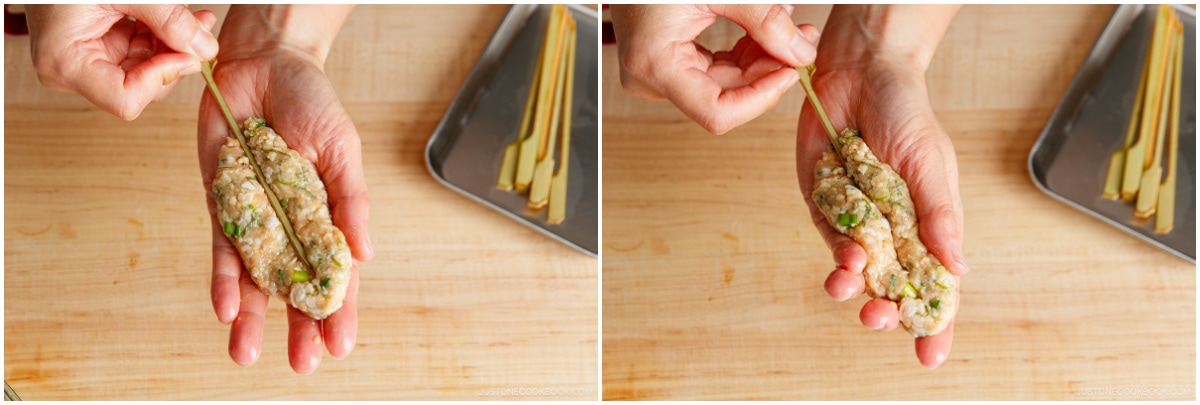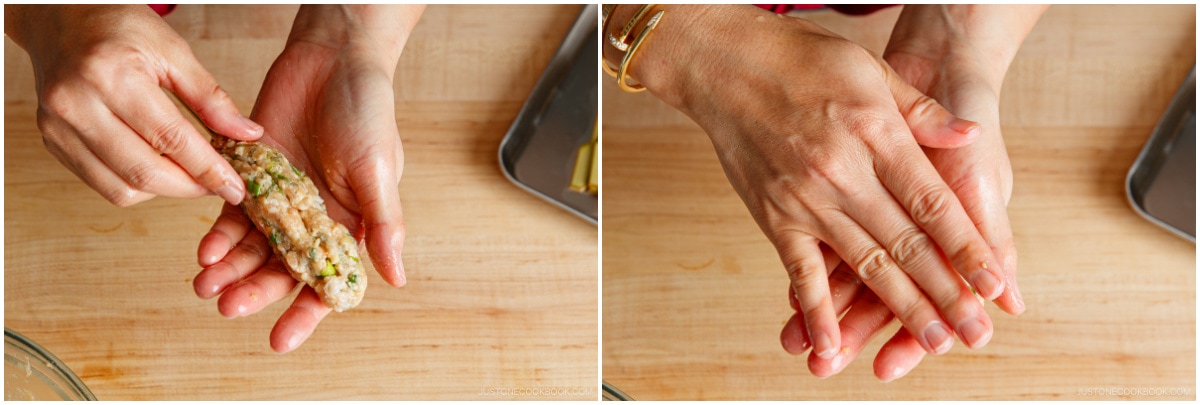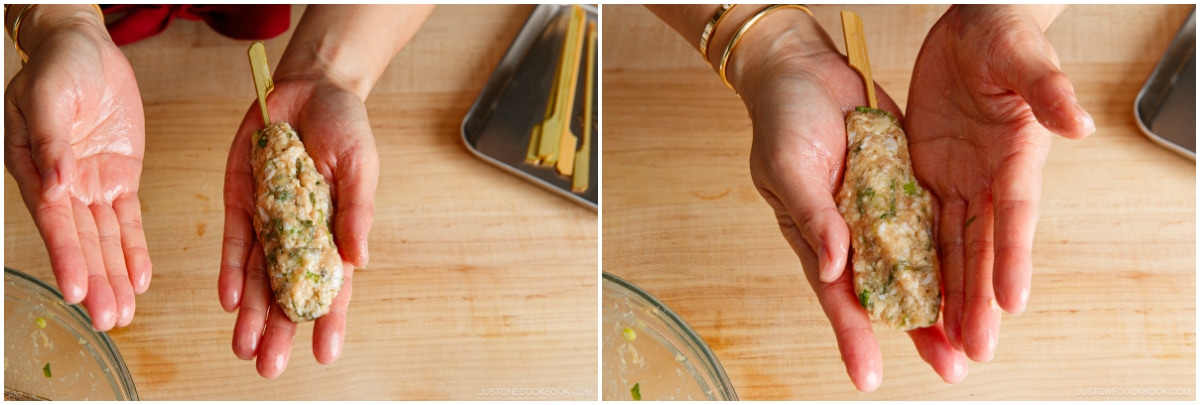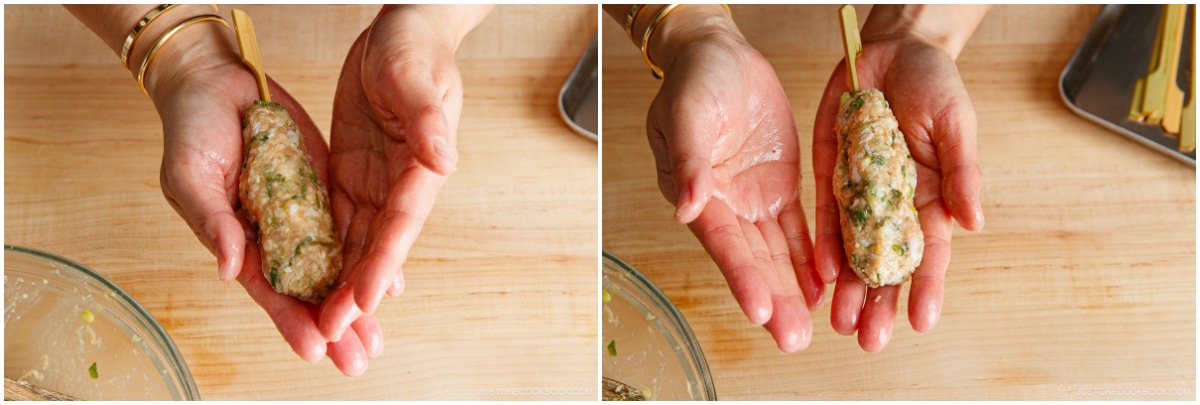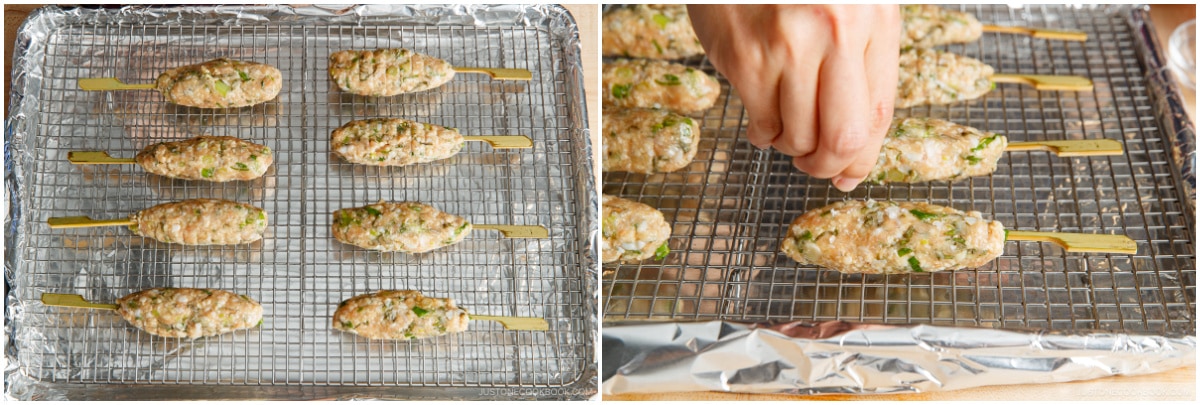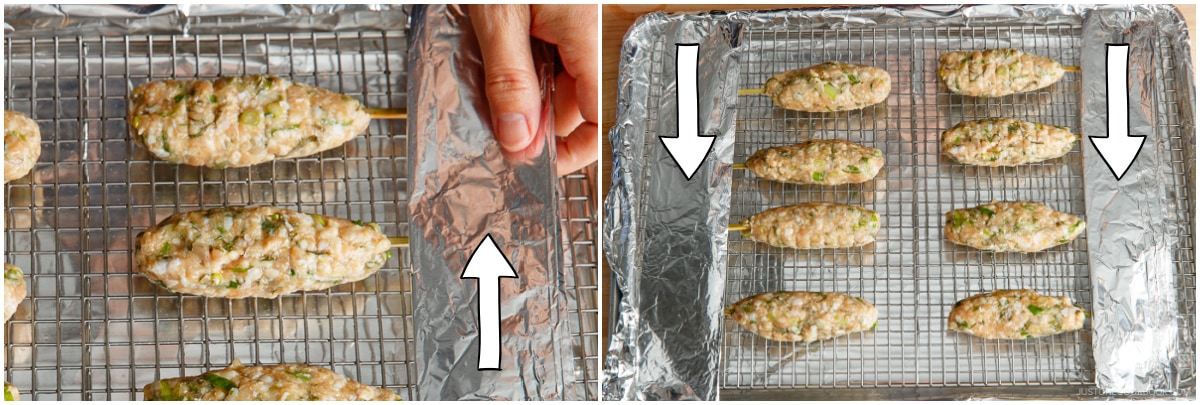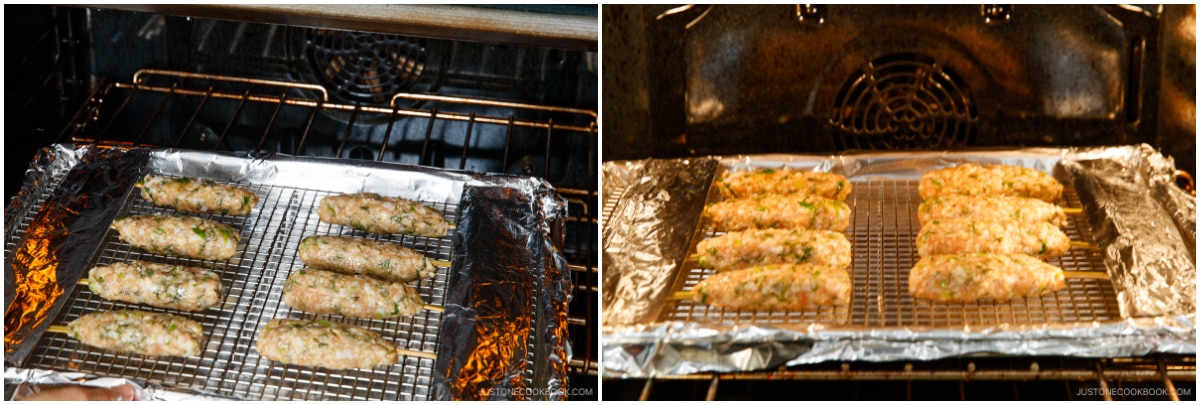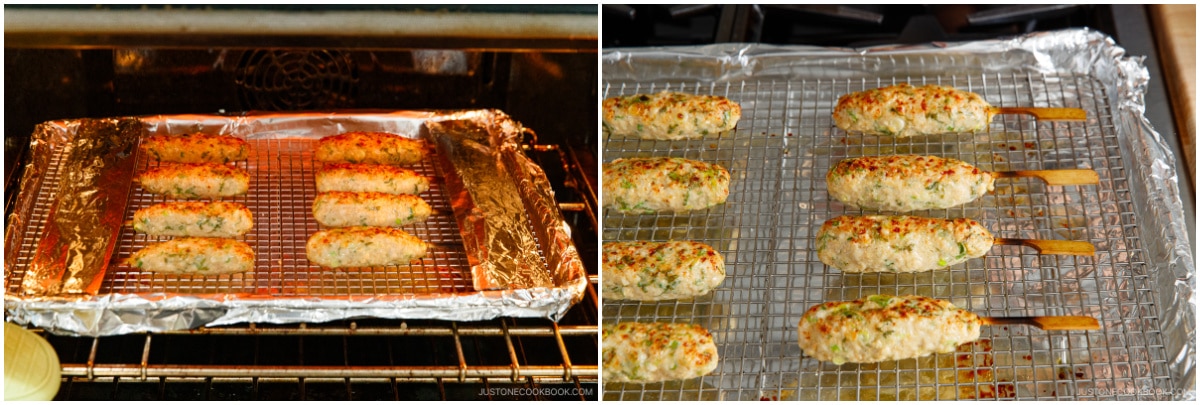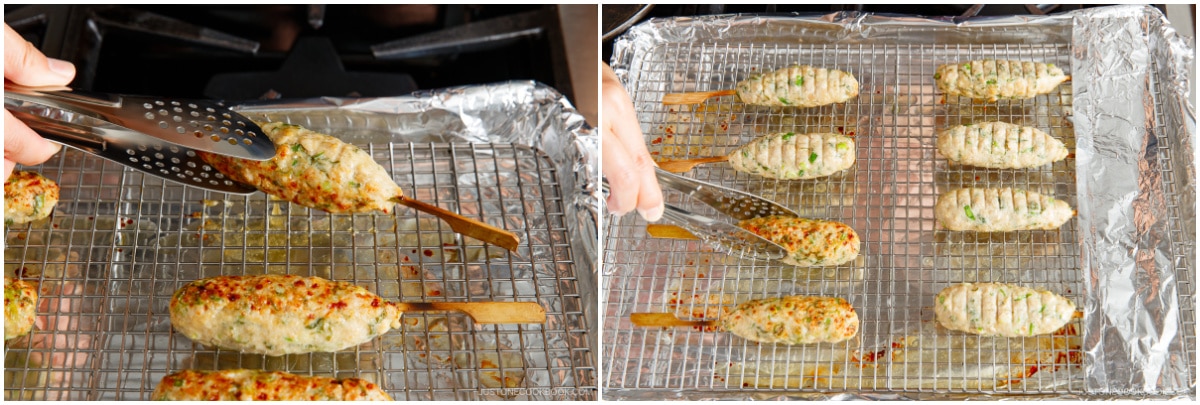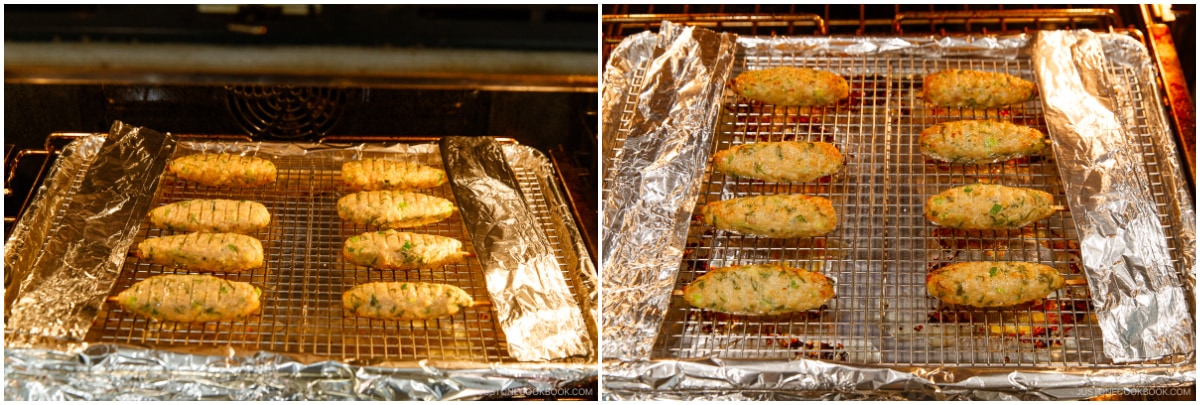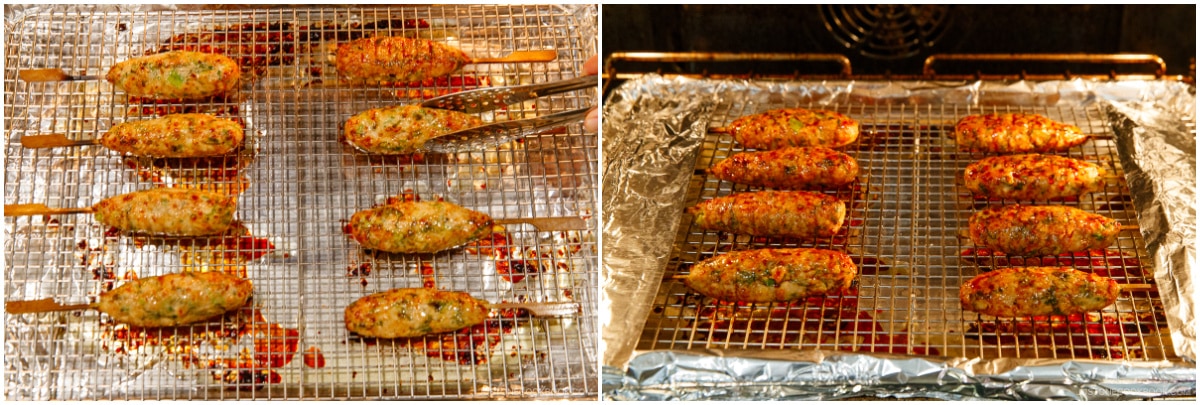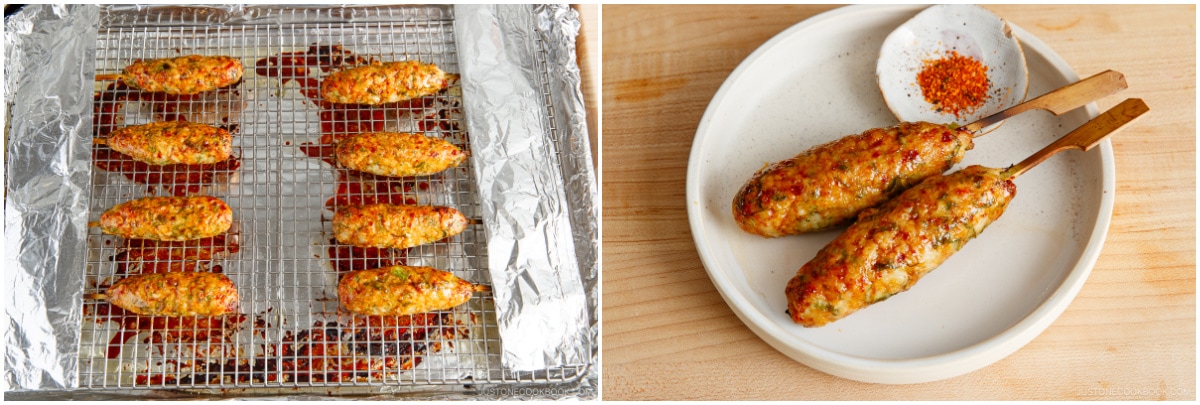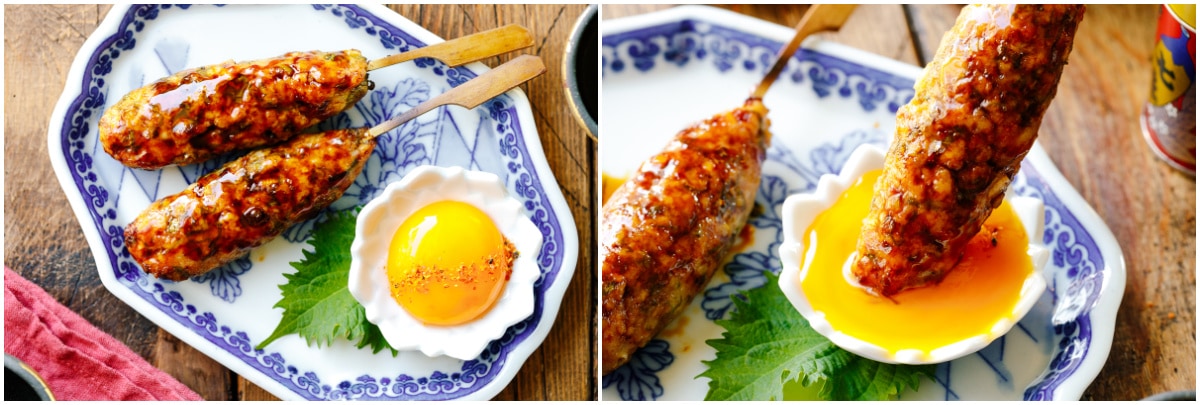If you’re on the hunt for some crowd-pleaser recipes for your next party, look no further than the world of Japanese bar fare known as izakaya food! The dishes are often bite-sized or skewered and meant to be enjoyed in a lively, social setting. Picture the classics like Chicken Karaage, Yakitori, and Gyoza. The best part: They go hand in hand with sake and Japanese draft beer. Today, I’ve got another favorite that you need to try at home: Tsukune or Japanese chicken meatball skewers.
What is Tsukune?
Tsukune (つくね) refers to Japanese chicken meatballs that are skewered, grilled, and coated with a sweet and savory sauce called tare. To make tsukune, you’ll need ground chicken or a mix of chicken and pork, scallions, and various seasonings. The meat mixture is formed into an oval patty or three meatballs, which are then threaded onto bamboo skewers. They can be cooked either over charcoal at restaurants or pan-fried when prepared at home. For family dinners, Japanese home cooks typically serve the meatballs without the skewers, so you can certainly make them in regular ball shapes. But if you’re serving tsukune for a party or a potluck, I recommend skewering them as demonstrated here. Everybody loves food on a stick!
Tsukune Making Tips
A Big Secret for Juicy Chicken Meatballs
When you make chicken meatballs, you want to make sure they are fluffy, springy, and juicy. I learned this technique from The Japanese Grill, one of my husband’s favorite grill cookbooks, and I’ve been following this method ever since. To make the ground chicken mixture, precook one-third of the ground chicken first. Let it cool completely and then mix it with the raw ground chicken. Do you notice when you cook the meat, you end up with much smaller pieces because the meat shrank after cooking? This technique of precooking a part of the meat mixture prevents the meat from shrinking too much. Also, it prevents the meat from losing a lot of juice. Although it is an extra step, I find it’s totally worth it.
How to Use the Broiler When Cooking the Tsukune
To make the tsukune similar to the restaurant style, use the broiler in the oven. Unlike baking, which uses hot air to cook the food, the broiler uses infrared energy similar to an outdoor grill. When it’s done cooking, the tsukune comes out really juicy and beautifully charred. Here are some important tips for you.
How to Make Tsukune
The Ingredients You’ll Need
Ground chicken Shiso leaves – Skip if you can’t find them. It definitely tastes better with it. Scallions Seasonings: Miso, sesame oil, and salt Homemade yakitori sauce: sake, mirin, soy sauce, and brown sugar For serving (optional): Shichimi togarashi and raw egg yolk (please see the note below)
The Cooking Steps
Homemade Yakitori Sauce
Elevate your tsukune with this homemade sauce—it’s the secret to taking them from good to absolutely mouthwatering! All you have to do is mix together five simple ingredients: sake, mirin, soy sauce, brown sugar, and water. Then, let it simmer away on medium-low heat for about 30 minutes until it reduces by half and thickens up. Trust me, it’s a breeze! My yakitori sauce recipe below will yield some extra, so save the leftover for other dishes. You can dilute it with a little bit of water to thin it and use it as a marinade or stir-fry sauce.
How to Eat Tsukune
Tsukune is delicious when brushed with yakitori sauce alone, but there are other fun ways to enjoy the meatball skewers too!
Dip in raw egg yolk. Eating raw eggs is common in Japan. Eggs are processed differently there and raw eggs are considered safe to consume. Dipping the sweet and salty chicken meatball in rich, creamy, and naturally sweet egg yolk makes it extra delicious. Dip in Japanese mayonnaise. I highly recommend Japanese mayo here like the Kewpie brand. Then, sprinkle with a bit of shichimi for a spicy kick. Sprinkle with shichimi togarashi. Need a spicy kick? Sprinkle shichimi over the tsukune. Enjoy it with yuzu kosho. The citrusy hot sauce gives a bold and spicy taste. Give it a try!
What to Serve with Tsukune
Beverages: Sake, Japanese beer Appetizers: Agedashi Tofu, Spicy Edamame, Cold Tofu (Hiyayakko) Mains: Teba Shio (Salted Chicken Wings), Kakuni (Braised Pork Belly) Salads: Japanese Potato Salad, Tofu Salad with Sesame Ponzu Dressing Rice: Onigiri (Japanese Rice Balls), Yaki Onigiri (Grilled Rice Balls)
Also, don’t forget to try out my Teriyaki Chicken Meatballs and Meatballs with Sweet and Sour Sauce. Wish to learn more about Japanese cooking? Sign up for our free newsletter to receive cooking tips & recipe updates! And stay in touch with me on Facebook, Pinterest, YouTube, and Instagram. Editor’s Note: This post was originally published on June 2, 2014. It was republished with new images, a new video, and more helpful content on January 6, 2024.
